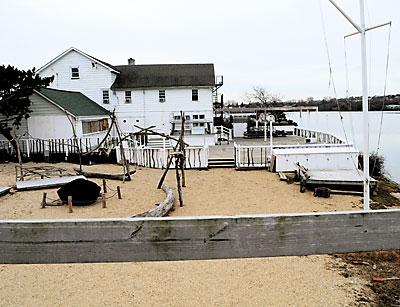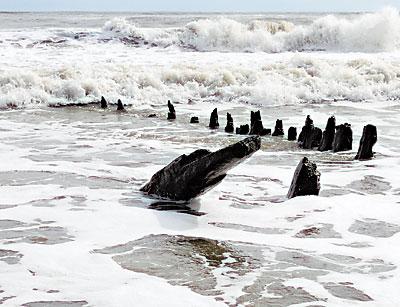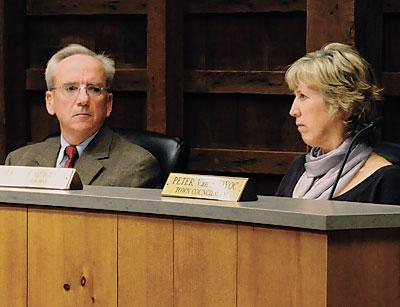Lawyer Says Surf Lodge Is for Sale
Lawyer Says Surf Lodge Is for Sale

The Surf Lodge, Montauk’s trendy summertime playground for adults, is for sale, according to Colin Astarita, who let it be known at a closed-door conference with Justice Catherine A. Cahill on the town’s ongoing case against the corporation on March 19.
The conference was called by Justice Cahill in an effort to settle the terms of the dispute. Mr. Astarita told her the four principals of the corporation, Jayma Cardoso, Jamie Mulholland, Rob McKinley, and Steve Kamali, “are closing down Edgemere Montauk and selling the Surf Lodge.”
He went on to tell the court, “They have two potential buyers. They are in a position where they would like to close this case, and they are moving on.” Mr. Astarita has since been replaced by Thomas Horn, an East Hampton attorney.
When asked at the conference about the need for a proposed $140,000 new septic system for the property, which sits on Fort Pond, Mr. Astarita told Justice Cahill that the owners had said, “We can’t engage in a whole septic system program. Find out what the town wants. They win. We’ll sell and let the new owner deal with whatever down the line.” Justice Cahill expressed doubts about such an arrangement.
The conference soon broke down with the two sides unable to reach an agreement on settling the outstanding 687 violations alleged against the hot spot during the 2011 season.
Back in the courtroom, the session that followed was brief and heated, as Mr. Astarita objected to Justice Cahill’s discussing the owners’ plans to sell in open court, despite the fact that a court reporter had recorded the conference. Justice Cahill ended the session saying, “At this point, gentlemen, we are going to have to proceed to trial.”
But on Monday, when the case returned to court for what was supposed to be a pre-trial hearing on the violations, it ended in an adjournment and pre-trial motions were set for April 16. Mr. Astarita entered the court as attorney for the owners, but Mr. Horn exited it 20 minutes later as the new attorney.
Afterward, outside the courthouse, Pat Gunn, an assistant town attorney, said, “A new attorney is potentially another delay.” He had indicated previously that “one of our desires is to wrap this up before the new summer season.”
For his part, Mr. Horn said afterward, “The judge is respectfully impatient and wants me to get up to speed as soon as I can.” He could be seen minutes later huddling with Robert Connelly, the town attorney. When asked when he had been brought in on the case, Mr. Connelly replied, “Over the weekend,” noting that he was taking the case at Justice Cahill’s discretion.
Meanwhile, in early March, King and Grove Hotels, the company that has managed the Surf Lodge as well as Ruschmeyer’s in Montauk, announced that it would no longer have the Surf Lodge as a client. Jennifer Shields, speaking for King and Grove, said the company will focus on Ruschmeyer’s, which she described as the company’s “flagship,” as well as “new, emerging lifestyle hotel brands.”
Ben Pundole and Rob McKinley, one of Edgemere Montauk’s principals, are partners in King and Grove, which also manages properties in Miami and in Brooklyn, Ms. Shields said.
Mr. McKinley, while not wanting to comment on the possibility of a sale or on the court proceedings, said via e-mail this week, “The Surf Lodge has and always will work with the town and community to become a better member each day we’re open. We have a commitment to Montauk and its residents and guests, to provide a good honest product, to promote commerce, and maintain the natural beauty of Montauk.”
With Reporting by Joanne Pilgrim






